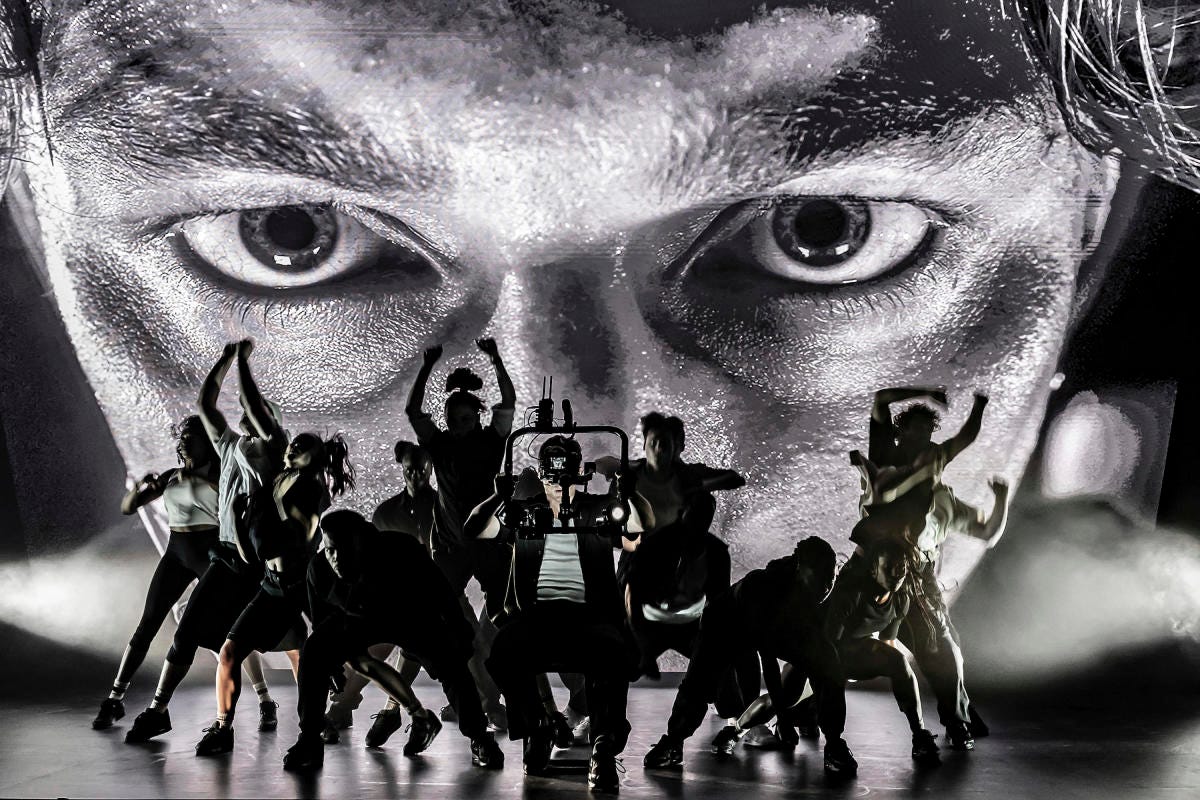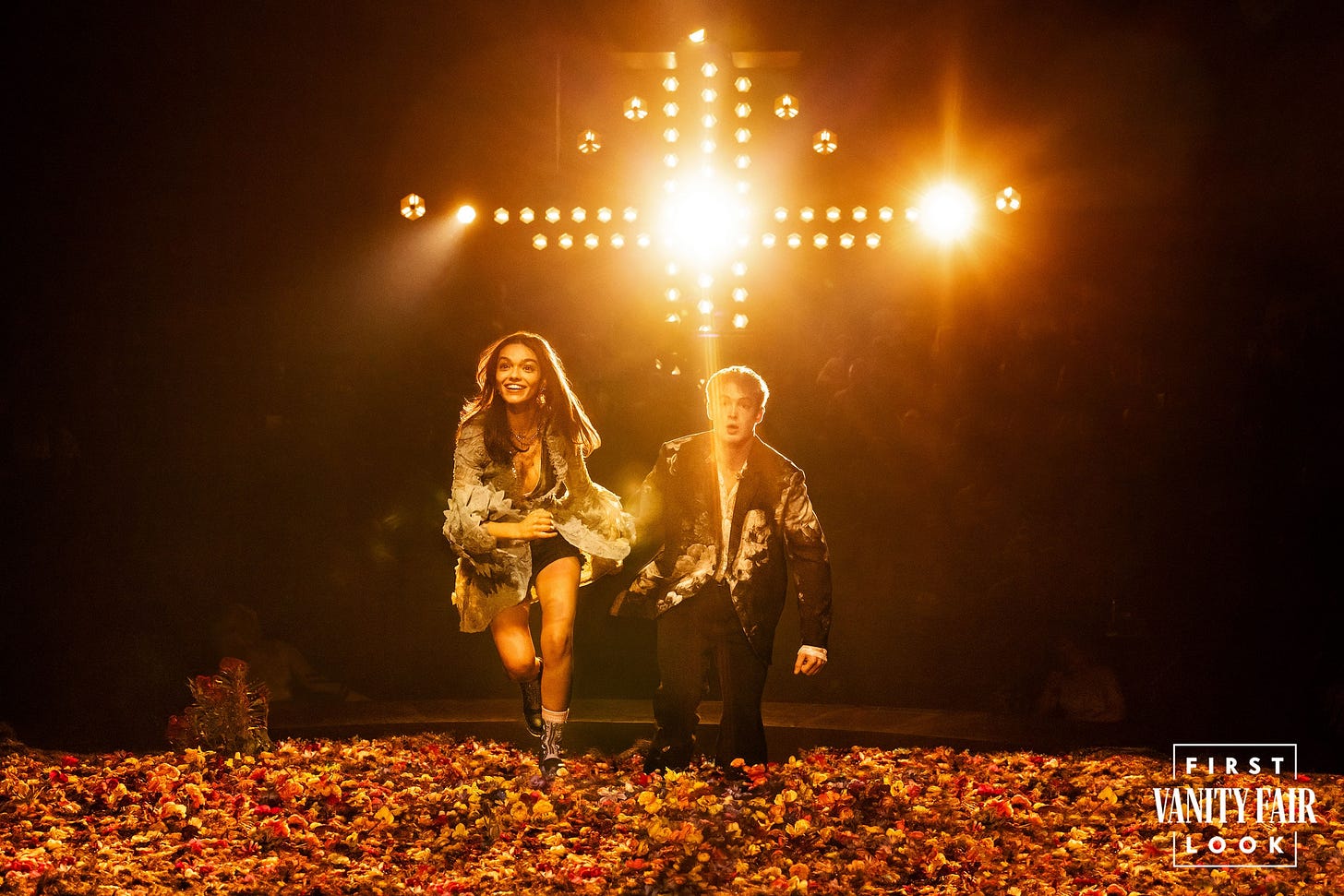This past weekend, Ashley and I were lucky enough to catch two of the hottest shows on Broadway, the revivals of Sunset Boulevard and Romeo and Juliet. On paper, the shows couldn’t be more different. One is a 1994 musical based on a 1950s film of the same name, the other a straight play from history’s most infamous playwright, originally published in 1597. One features a cast of almost entirely Millennial actors and is sung all the way through, the other cast of almost entirely Gen Z actors speaking old English. Seeing these productions back to back proved to be quite jarring. However, I couldn’t help but reflect on how much they had in common, and what they were saying about our current cultural moment.
We will start with what was most interesting in both productions. Jamie Lloyd, director of Sunset Boulevard, is known for his minimalist approach to theatre-making. It works for some and infuriates others, regardless he always has people talking. His Sunset Boulevard is no different. There are no costumes, props, or sets to be found. Instead, he focuses on lighting, and a huge LED screen the size of the stage that floats from the rafters like a Broadway Diva returning to the stage. He has effectively stripped everything down, including the acting! Reduced to an almost monotone delivery, the actors rarely even look at each other but instead at the audience the people in the dark. As the show unfolds, it becomes clear we are witnessing not just a live stage adaptation but perhaps a movie/stage hybrid complete with live film cameras on hand to bring us as close to the actors as possible. Something only the camera can do. It seems Lloyd is trying to capture the essence of the original black-and-white film by creating a black-and-white production. With only touches of red in the second act. The biggest thing of note here is the technological achievements, and I do stand by the term, achievement, when else have we seen this use of technology on this scale on the Broadway stage? Some have called it a gimmick or distracting, but I found it thrilling and visionary. Pair these visuals with one of Andrew Lloyd Webber’s most famous, cinematic, and sweeping scores and you have magic on stage.
Sam Gold’s Romeo and Juliet revival is staged at Circle in the Square and presented entirely theater in the round. Where Sunset Boulevard is an attempt at black-and-white, Romeo and Juliet offers color bursting at the seams through bright, and bold lighting hues and a neon color pallet in the few set pieces. I would still argue this production is minimalist (with some actors even playing two roles), although there is more to see on stage than in Sunset Boulevard. The costumes, if we want to call them that, offer the latest GenZ fashion trends, tight tops, and baggy jeans. The production starts with a dance party and the vibe feels youthful, buoyant, and joyful. It’s like we aren’t even headed for a tragic end. There were some pretty interesting stage tricks and the acting was good. Gold even recruited Jack Antonoff (an extremely popular music producer) to score the show and add a few songs that are sung. It’s obvious they didn’t want to waste Rachel Ziegler’s vocal talents (one of the greatest vocal lists of her generation), and I assure you, no vocals were wasted.
What’s wild, is everything that I found interesting in each show can be met almost equally with what I was dumbfounded by. Both shows had a consistent “wink, wink” toward the audience, pulling us out of the (already significant) suspension of disbelief. Perhaps if they followed through with the show as the book is written, it would feel like an over-commitment. Was that their fear? And what is the push for minimalism? Is it just post-modern, avant-garde, pretentious theatre? I don’t think so. Minimalism isn’t new, but to reduce two (normally) lavish productions to a dark stage and loungewear, I have to wonder why. It also feels like a larger moment in our cultural zeitgeist pushing against lavish, beautiful things. Billionaires aren’t popular but derided. Luxury is only embraced by those who can afford it. Why have an intricate set design (SB and R+J feature wealthy people) when you can have a single black chair (the characters are just like us!)? Both shows also decided to center themselves around women lost in their delusion.
Correct me if I’m wrong, but Sunset Boulevard ends with a more lament to the treatment of “older” women in Hollywood, while also contrasting two women (one who accepts reality (Betty) and one who doesn’t (Norma). Because of the hyper-minimalism, both elements were lost and we were just left with a woman lost in her delusion. It’s almost as if Jamie Lloyd was saying “Be free in your delusion, even if it ends your life.”
This can also be said of Romeo and Juliet. I’m no Shakespearean expert, but isn’t the point of the show to exploit the societal constraints within feuding families- and the deadly toll it takes on two lovers? The text of the show didn’t change, but the presentation of it was so light and fluffy (not to mention the actors playing two roles) that it took us out of any such critique. The folks behind me were far more concerned with Kit’s muscles and Rachel’s petite body than any commentary on society. The neon-colored lights and EDM soundtrack seemed designed to distract from the tragedy. As if Sam Gold was saying “This show is for GenZ, let them have a party!”
So what are we left with? Two stories of people choosing an alternate reality than the one they are currently living. Norma refuses to accept the reality she is no longer young or relevant anymore and will kill for the spotlight. Romeo and Juliet choose to believe their whirlwind lust affair is love and choose to die for it. Should we choose our version of reality? In an age obsessed with personal truth, are these shows saying choose your truth unto death? I think in some ways, they are. That’s scary. Or maybe I’m delusional. [insert winking face]
-L
{post script}
If you’re going to New York, go see Sunset Boulevard. What Nicole is doing on Broadway, is quite rare. Its use of tech makes the whole thing worth the price of admission. My only suggestion is to watch the film (so you know the story) before seeing it. I’m so glad we did. This show is up there with last year’s Parade revival and The Curious Incident of the Dog in the Nighttime. A perfect example of why I make my trek to the Great White Way so often.






